Have you ever seen a newborn with abnormal ears, small jaw and a large nose? He or she might possibly be suffering from a condition known as Treacher Collins. Read on to what is Treacher Collins as well as its causes, symptoms, diagnosis and treatment.
Treacher Collins Syndrome Definition
Page Contents
- 1 Treacher Collins Syndrome Definition
- 2 Treacher Collins ICD9 Code
- 3 Treacher Collins History
- 4 Treacher Collins Syndrome Causes
- 5 Is Treacher Collins Syndrome Autosomal?
- 6 Treacher Collins Syndrome Symptoms
- 7 Treacher Collins and Mental Retardation
- 8 Treacher Collins Diagnosis
- 9 Treacher Collins Differential Diagnosis
- 10 Treacher Collins Syndrome Treatment
- 11 Treacher Collins Prognosis
- 12 Treacher Collins Complications
- 13 Treacher Collins Prevention
- 14 Treacher Collins Syndrome Case
- 15 Treacher Collins Syndrome Life Expectancy
- 16 Treacher Collins Foundation
- 17 Treacher Collins Syndrome Pictures
It is a rare craniofacial condition that leads to abnormalities in the structure of the face. A baby born with this syndrome is found to be born with deformed facial features.
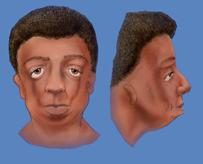
Picture 1 – Treacher Collins Syndrome
This is a disease that is found to arise in approximately 1 in 10,000 births, in the UK. This condition is also known by other names like “Treacher Collins–Franceschetti syndrome” and “Mandibulofacial dysostosis”.
Treacher Collins ICD9 Code
The ICD9 Code for Treacher Collins Syndrome is 756.0.
Treacher Collins History
The condition was first reported around 1900 by the famous ophthalmologist Edward Treacher Collins after whom it is named. During his tenure as an intern at the Royal London Ophthalmic Hospital, Collins studied skulls of various TCS sufferers. He also identified structural abnormalities characteristic of this syndrome in children affected with TCS. However, it was not until 1977 that the disease became popular. An article published in that year by Donald G. McNeil, Jr. first brought the disorder into limelight and raised public awareness about it. From 2000, several TV shows have depicted the condition and made the general people aware of how the condition arises.
Treacher Collins Syndrome Causes
As aforementioned, this is an inherited condition that primarily arises due to the mutation of a particular gene that controls the maturation of cartilage tissue and facial bones in an embryo. The development of the disease involves a defective protein known as Treacle that is passed down from generation to generation in the same family. Facial abnormalities are supposed to be a result of changes in the gene on chromosome 5.
The severity of this condition may differ from person to person and from generation to generation. A person with the genetic defect of this condition has a 50% chance of passing it on to his or her children.
Is Treacher Collins Syndrome Autosomal?
Treacher Collins Syndrome (TCS) is regarded to be an autosomal dominant condition. This means that a child inherits the disorder if either of his or her parents acts as a carrier of the mutated gene. Approximately 40% cases are seen to develop due to any one parent carrying the defective gene. However around half of all reported cases are seen to arise due to new mutations and not familial inheritance. Children of unaffected parents are also found to suffer from this condition.
Treacher Collins Syndrome Symptoms
The disease affects the development of soft tissues and bones in the face and skull. Infants who are born with this condition are likely to suffer from various structural abnormalities of the face. The cartilage constituting the outer part of their ears is unusual in appearance or may be missing partially or almost entirely. The cheekbones may be abnormally lower (than in usual cases). The eyes consequently have a drooping appearance and may slant down at the outer corners.
Some other structural anomalies include:
- Extremely small jaw (Micrognathia)
- Slanted jaw (occasionally)
- Abnormal ear canal
- Defects in the lower eyelid (Coloboma)
- Very wide mouth
- Cleft palate
- Irregular or missing eyelashes on the lower eyelid
- Unusual growth of scalp hair across the cheeks like a sideburn
- Absence or underdevelopment of floors or side walls of the eye socket
- Large, beak-shaped nose
- Small or blocked nasal passages
- Very small or missing thumbs (occasionally)
Such facial deformities can lead to various medical problems, such as:
- Hearing loss
- Vision problems
- Speech problems
- Difficulties in eating
- Problems in breathing
- Sleep apnea
In extreme cases, the condition can create problems in hearing and lead to constriction of the airways.
Treacher Collins and Mental Retardation
It is not yet medically proved whether mental retardation arises due to this syndrome. Although some individuals with TCS have been found to suffer from reduced mental capabilities, the situation is pretty good for most patients. Majority of sufferers are found to be having normal mental capabilities and they carry out their daily functions as normally as people unaffected with TCS.
Treacher Collins Diagnosis
The condition is initially diagnosed by a physical examination of the structural deformities. Physicians usually look for common signs like abnormal eye shape, facial clefts, flat cheekbones, small jaw and abnormal ear canal. A routine ultrasound imaging can help obstetricians diagnose TCS even before the birth of an infant. However, abnormalities should be prominent enough to be detected by ultrasound. Otherwise, the condition may not be diagnosed until the infant is examined after birth.
When a physician detects TCS symptoms, he or she uses a Computerized Tomography (CT) scan to study the malformations in the head of a newborn. In infants born with airway constriction, feeding and breathing tubes can be surgically inserted on an emergency basis. Hearing aids can be immediately fitted in babies with hearing problems.
Genetic tests can help in detection of the genetic changes associated to this disorder.
Treacher Collins Differential Diagnosis
The differential diagnosis for Treacher Collins involves distinguishing the disease from other conditions that produce apparently similar symptoms. These include:
- Nager Syndrome
- Miller Syndrome
- Hemifacial Microsomia
- Goldenhar Syndrome
Treacher Collins Syndrome Treatment
Infants with this condition suffer from various birth defects and require a series of operations for correction of the deformities. An experienced plastic surgeon can rectify receding chin and make other surgical changes in facial structure.
As a general rule, doctors prefer to postpone treatment until affected children turn older in age. Children who are around 5 years old have enough cartilage tissue around the ribs. Surgeons graft pieces of these cartilaginous tissues onto the distorted ears. Deformed cheeks and jaws can also be corrected by grafting onto them bones taken from other parts of the patient’s body. However, surgeons usually wait until patients are about 20 years old before attempting a bone grafting surgery. Patients may require multiple plastic surgeries and bone grafts throughout their life for complete correction of their facial deformities.
Treacher Collins Hearing Treatment
Majority of children with this syndrome suffer from significant loss of hearing abilities. Many of them need to wear implanted hearing aids or a conductive hearing aid to ensure better performance in school.
Treacher Collins Reconstruction Treatment
In many patients, Reconstructive surgery may be needed to correct problems like:
- Cleft palate
- Deformed cheekbones
- Abnormal nose shape
- Underdeveloped jaw (which may improve breathing troubles)
- Unusual outer ear
Reconstructive surgeries are mostly carried out in children older than five years. Several operations are conducted even before kids reach an adolescent age.
Treatment of Treacher Collins Breathing Problems
Children suffering from breathing difficulties may need to undergo a Tracheostomy. The operation involves making a hole in the trachea through the front section of the neck and inserting a breathing tube. This can greatly improve breathing. Patients continue breathing through this tube until they grow older and have their lower jaw (mandible) grown enough to require another surgical correction. Surgeries are conducted periodically to replace the tubes. In rare cases, the surgery can give rise to complications like collapsed lung, laryngeal nerve damage and bleeding.
Treacher Collins Eye Treatment
In some patients, a notch (or coloboma) in the lower eyelid may lead to easy drying out of the eyes. This may heighten the risk of infection and can be corrected by surgery.
Treatment of Treacher Collins Dental Problems
In some children, Treacher Collins leads to overcrowding of teeth or malocclusion of the bite (a problem where teeth do not meet each other unlike in normal people). Patients may require dental correction to correct these problems.
Treacher Collins Prognosis
Fortunately, children affected with this syndrome generally have normal development and grow up to function normally like normal adults. They are also found to display normal intelligence. However, most patients require repeated reconstructive operations throughout their lives to prevent health problems and better their appearances. Abnormal physical appearance usually affects the social capabilities as well as mental make-up of sufferers as they have to suffer ridicule from peers. Friends and family members should extend love, care and support to suffering children to dispel any feeling of inferiority or negativity arising in them.
It is extremely rare that the condition can arise again in children of normal parents (those not carrying the defective gene). However, this theory may be challenged by new genetic studies.
It is important that parents having a family history of the disease subject their children to early hearing tests. Most kids affected with this syndrome can gain from early intervention as well as speech and language programs.
Treacher Collins Complications
The structural abnormalities caused by this syndrome can give rise to several complications like:
- Speech difficulties
- Communication problems
- Vision problems
- Feeding difficulties
Treacher Collins Prevention
There is, unfortunately, no known way to prevent this syndrome. This is primarily due to the fact that some cases of TCS arise randomly and even in the absence of any family history of the disorder. Serious complications, such as breathing difficulties, can be prevented by early diagnosis and immediate treatment. These days, TCS can be diagnosed even in fetus and parents can decide whether they want to continue the pregnancy. However, prenatal testing can cause problems like miscarriage. It is therefore advisable that you consult your doctor before taking any medical decisions. If you have a family history of this disease and wish to have children, it is recommended that you undergo genetic counseling to know more about the risks of having children with TCS.
Treacher Collins Syndrome Case
An interesting case of TCS is that of Julianna Wetmore, who was born with severe facial deformities characteristic of this condition. The deformities were so acute that she came to be known as “The Girl without a Face”. Around 30-40% of her facial bones were absent. This led to her severely deformed facial appearance. However, her intelligence has been found to be normal and probably even more than girls of her age. Said to be the most extreme example of a TCS sufferer, Julianna is otherwise as healthy as any other eight year old girl in the world.
Jono Lancaster, 26, is another TCS patient. Jono has drooping eyes and no cheekbones, two of the most vital characteristics of the condition. He is almost normal otherwise, except for hearing problems. Jono uses a bone-anchored hearing aid to manage this difficulty.
Treacher Collins Syndrome Life Expectancy
TCS is not generally found to be a life threatening condition. The lifespan of a TCS sufferer is the same as an average person. However, some patients with deformed jaw are found to die in infancy due to respiratory difficulties.
Treacher Collins Foundation
It is a voluntary national health organization that comprises of individuals, families as well as professionals who wish to share experience and knowledge about TCS as well as other associated conditions. The institution seeks to inform and help family members of TCS about the disorder. It also promotes medical research on the syndrome.
The registered address of this establishment is:
Treacher Collins Foundation
P.O. Box 683
Norwich, VT 05055-0683
Contact information – Phone: 802-649-3050 or 1-800-TCF-2055
Official website: http://www.treachercollinsfnd.org/
Treacher Collins Syndrome Pictures
Here are some Treacher Collins photos that you will find quite assistive. Take a look at these Treacher Collins images to know how patients affected with this disfiguring disorder look like.
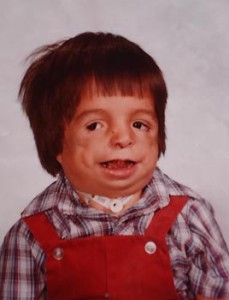
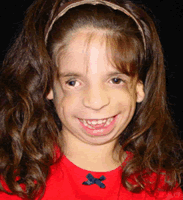
Picture 3 – Treacher Collins Syndrome Picture 4 – Treacher Collins Photo
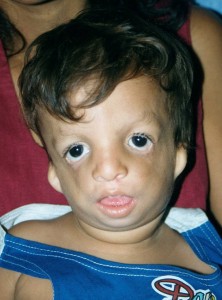
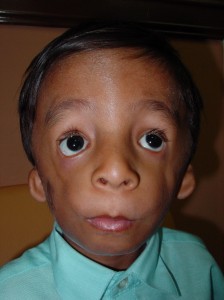
Picture 5 – Treacher Collins Syndrome Picture 6 – Treacher Collins Image
As a genetic condition, it is not yet possible to “cure” Treacher Collins Syndrome. Most patients can live in a completely normal way but may require surgical intervention to manage various medical problems. Fortunately, geneticists can now find out whether the gene responsible for the disease has come from parents or developed due to a new mutation. New studies are being conducted to check whether other genes could possibly be involved with this disorder.
References:
http://www.nlm.nih.gov/medlineplus/ency/article/001659.htm
http://www.faces-cranio.org/Disord/Treacher.htm
http://www.bbc.co.uk/health/physical_health/conditions/treachercollins1.shtml
http://www.umm.edu/ency/article/001659.htm

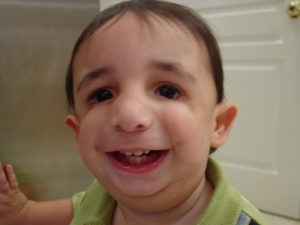
hi my name ia ann marie i am 33 year old i have treacher collins i wish there is a place where i can meet all people like my self i could show them who i am i enjoy hanging out i love shopping listing to music and art and craft i work at boa for 12 years i hop i hear from u soon from ann marie eaddy if u would like to call me it 302-528-2099 thanks